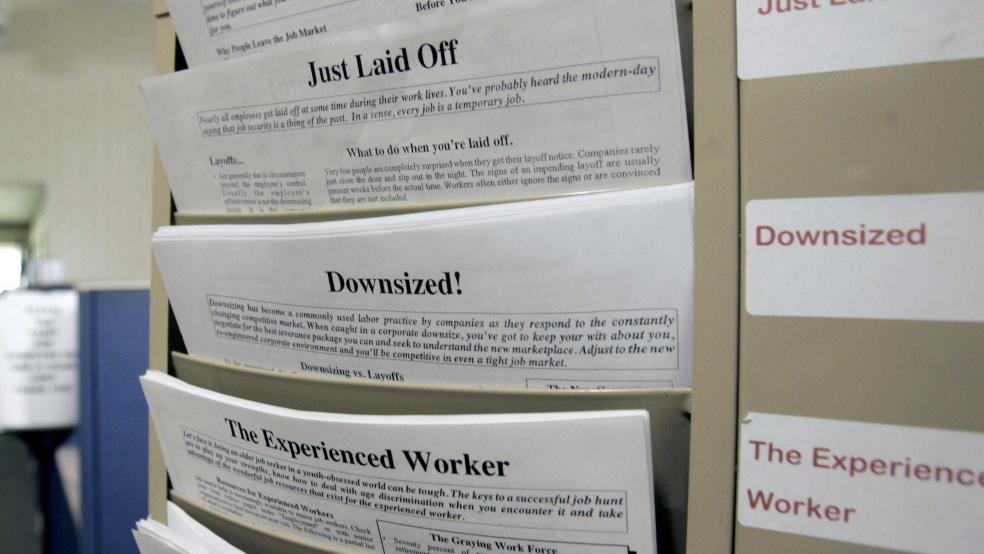About 12 million Americans will lose federal unemployment benefits at the end of the year if Congress fails to pass new legislation, according to a new report from the liberal-leaning Century Foundation that examines the toll that failure could take on both households and the broader economy.
The “jobless benefit cliff” will occur on December 26, when federal funding for two of the main emergency unemployment programs created by the Cares Act — Pandemic Unemployment Assistance and Pandemic Emergency Unemployment Compensation — runs out. Here’s how researchers Andrew Stettner and Elizabeth Pancotti break down the numbers:
About 7.3 million unemployed people will lose their Pandemic Unemployment Assistance (PUA) benefits on December 26. PUA provides aid to self-employed and gig workers, who are usually unable to participate in state benefit systems. Another 945,000 people will exhaust their PUA benefits before the December expiration date.
About 4.6 million people will lose their Pandemic Emergency Unemployment Compensation benefits on December 26. PEUC provides extended benefits for unemployed workers who have hit the time limit in their state-level programs. Another 3.5 million people will have run out of PEUC benefits before December 26.
All told, the 12 million people who will lose their federal unemployment benefits on the day after Christmas account for more than half of the 21.1 million currently receiving any type of jobless assistance. About 3 million of the workers losing federal aid will be able to access state-level unemployment programs, but the majority will be left with no benefits past the expiration date.
Unlike during previous recessions, the unemployment programs created by Congress in the Cares Act back in March came with “hard” cutoff dates, Stettner and Pancotti say, which means payments will be ended immediately, regardless of how many weeks of eligibility an aid recipient may have left. “Previous laws, such as the American Recovery and Reinvestment Act of 2009, had a soft cutoff, which allowed individuals already receiving benefits to continue doing so until their full term was exhausted, but stopped any additional workers from qualifying,” the researchers write. “The important difference here is that a soft cutoff creates a gentle downward slope for workers and the economy, while a hard cutoff creates a cliff.”
Effects on households: The researchers reviewed the literature on how long-term unemployment affects individuals and households, and the results are not pretty. Those who are jobless for more than 26 weeks and lose unemployment aid suffer in virtually every aspect of their lives, from their ability to maintain housing and pay bills to the condition of their mental and physical health, and the negative effects are long-lasting. “For this reason,” Stettner and Pancotti write, “Congress has historically provided federal support for extended benefits when large numbers of Americans are facing long-term unemployment and keeps these benefits in place until well into a cycle of recovery.”
Effects on the economy: Most economists see aid to the unemployed as an important means of maintaining demand in the economy during a recession, supporting jobs by pumping dollars into local businesses. “Unemployment insurance benefits have been proven over and over again to be one of the best dollar-for-dollar stimulus programs,” the researchers say. But the hard cutoff of benefits at the end of December for millions of workers will create more drag in the middle of an economic recovery that is already slowing. Stettner and Pancotti estimate that the loss of federal unemployment assistance will reduce spending in the economy by about $2.5 billion per week, a number that will grow as more workers exhaust their state benefits in early 2021.
In previous recessions, lawmakers waited longer to end emergency unemployment aid programs, giving the jobless more time — often years — to get back on their feet. If Congress allows it to occur, the December 26 cutoff will pull the plug in less than 12 months, even as the primary cause of the crisis — a raging pandemic — gathers strength.
“Nobody is talking about this,” Stettner told The Washington Post. “We’re just careening into this huge cliff and it’s like it’s not even happening. People are just totally, completely ignoring the situation at a time when things are getting worse before they’re going to get better in terms of public health.”




